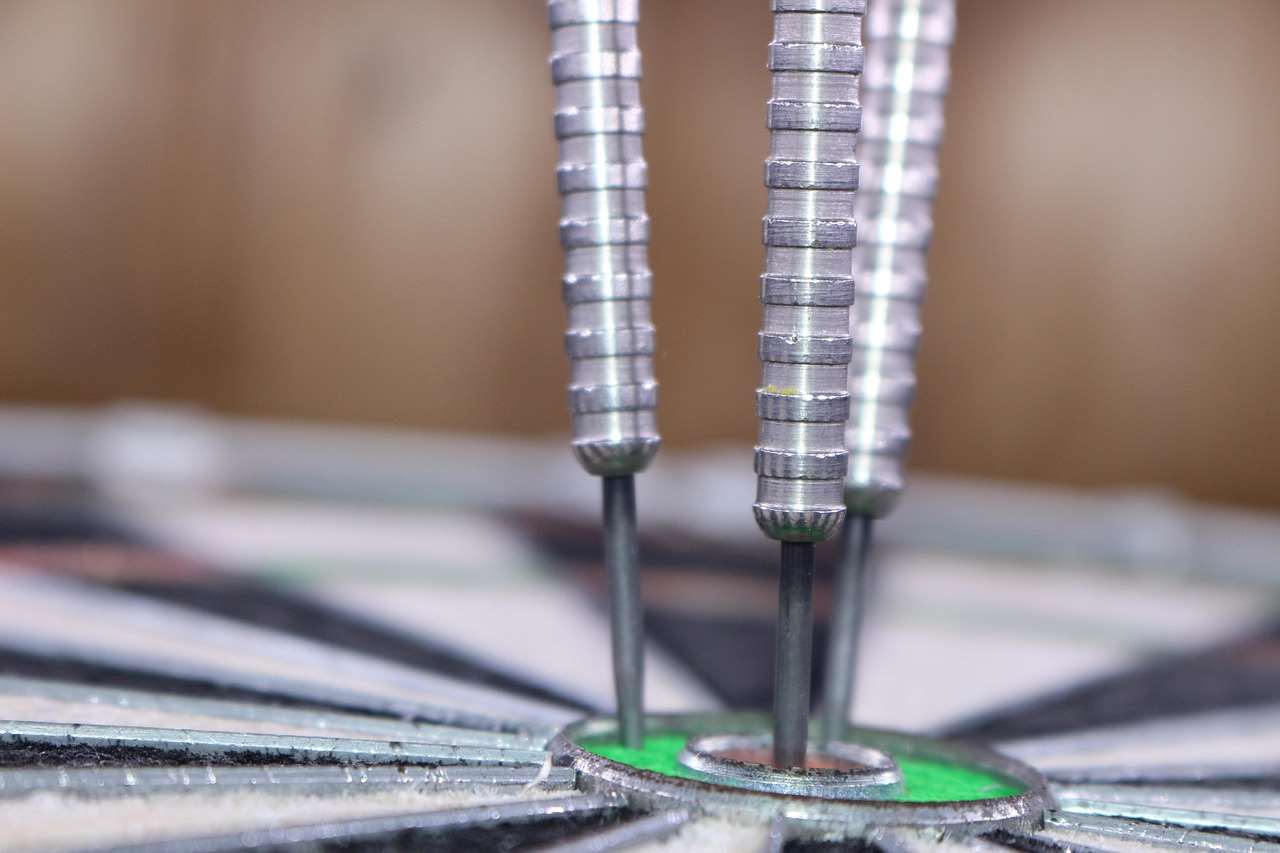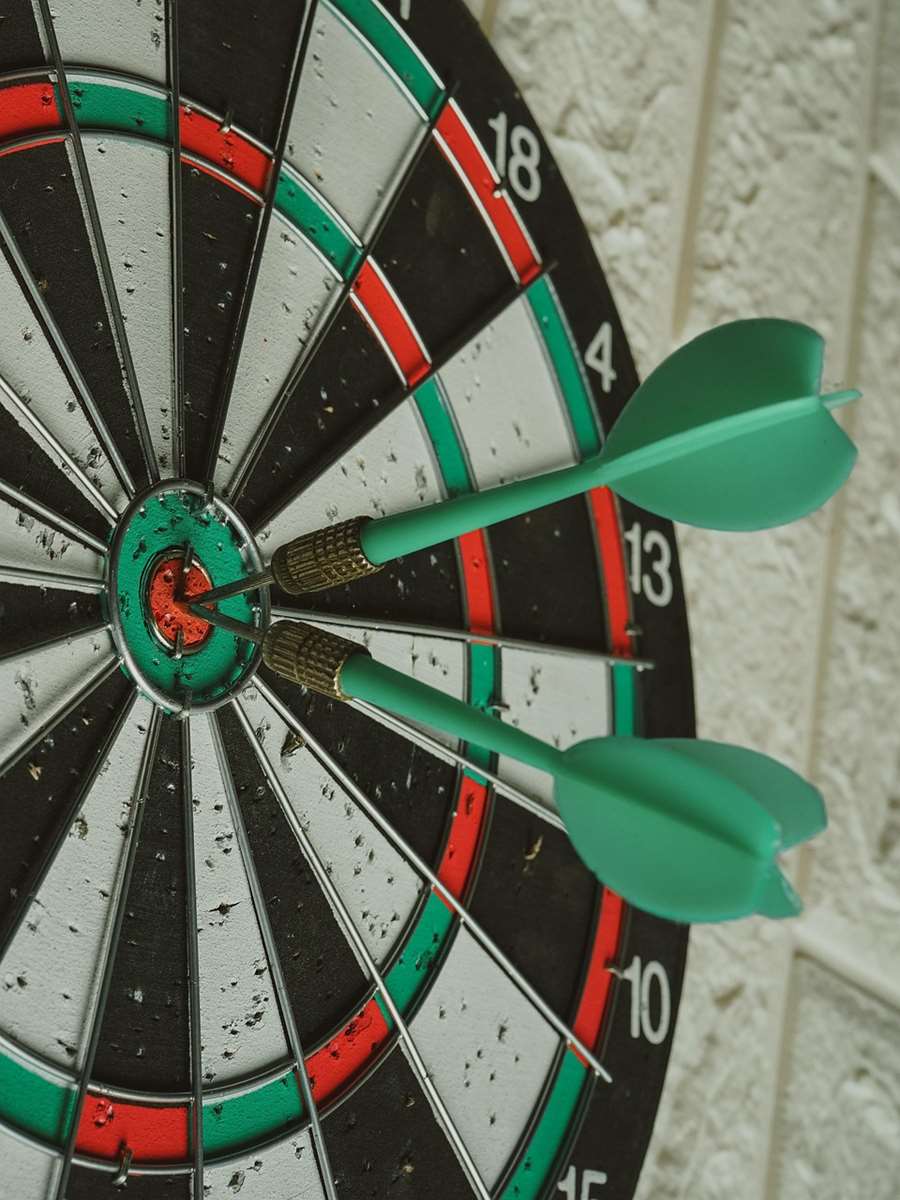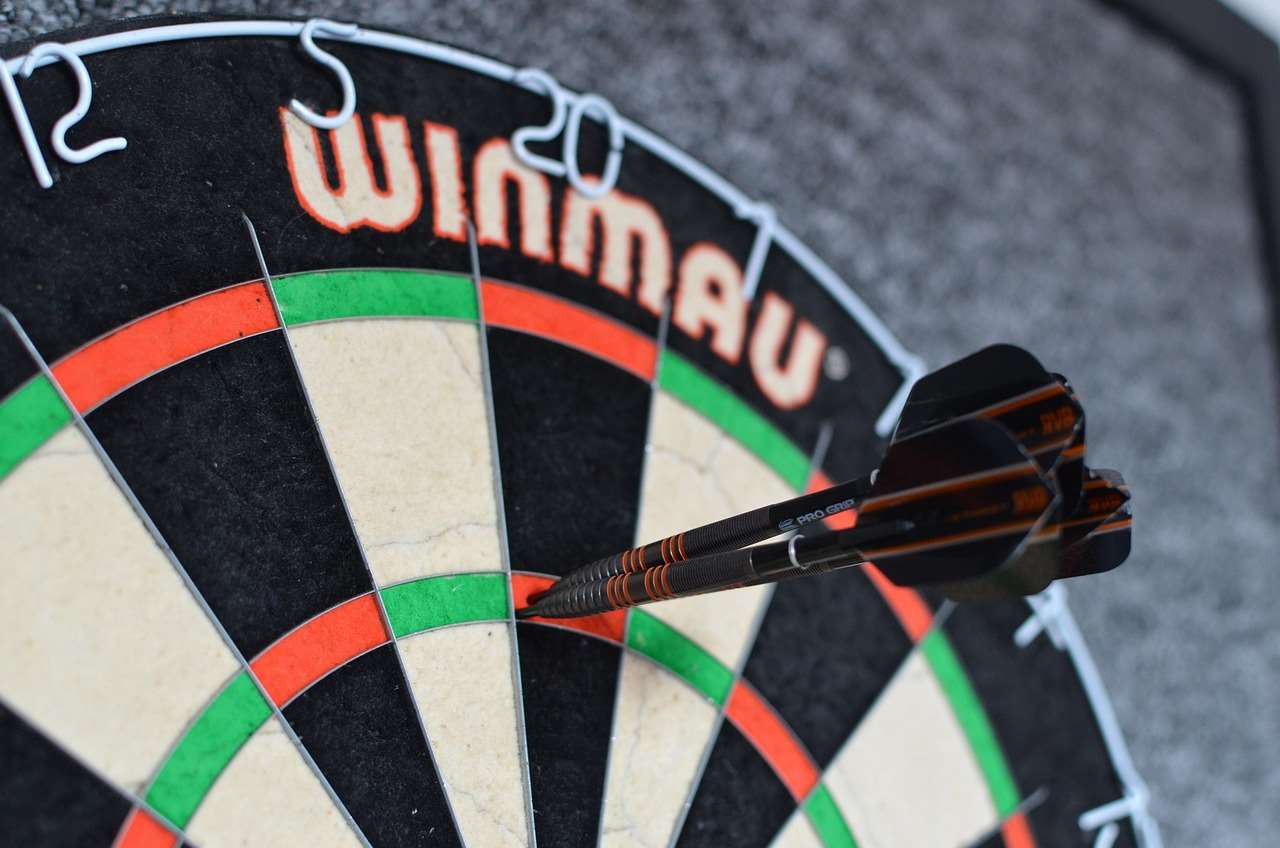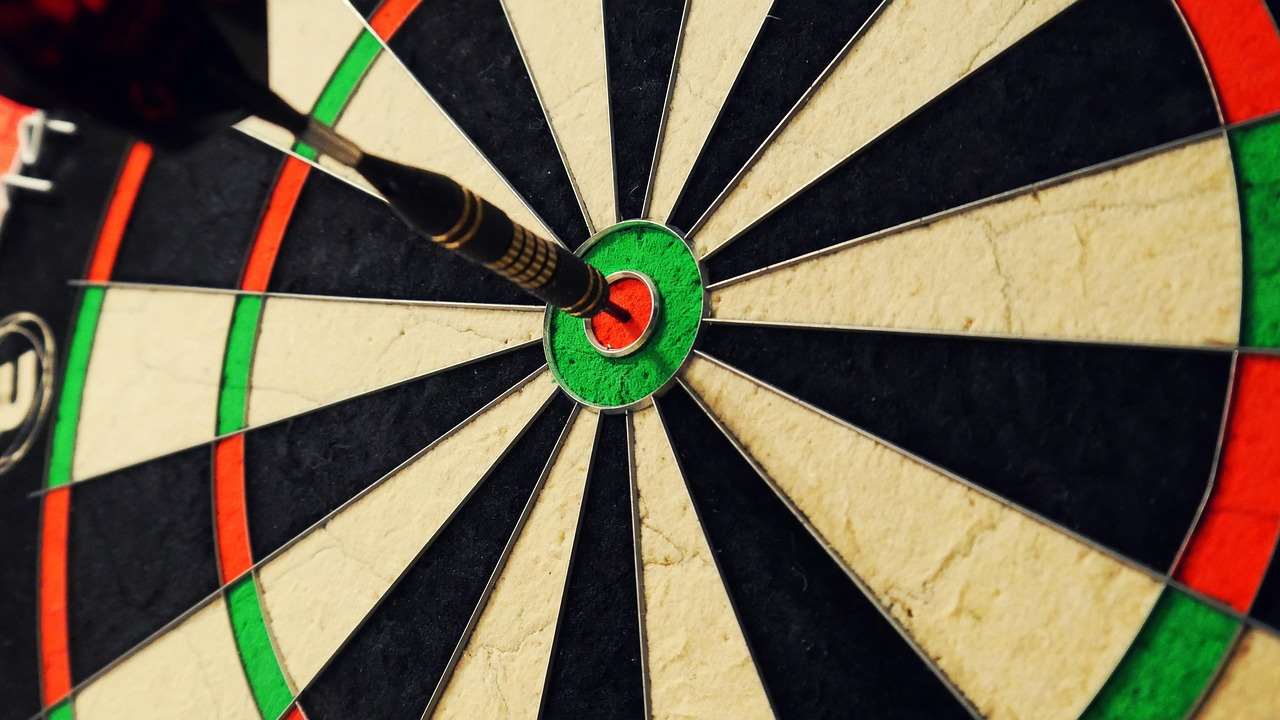Selecting the right weight for your straight barrel darts is crucial for improving your accuracy and overall game. This straight barrel weight guide selection focuses on helping you find the ideal weight based on your throwing style and experience. We’ll cover factors influencing your choice, weight ranges, and tips for testing different weights to optimize your performance.
⚠️ Still Using Pen & Paper (or a Chalkboard)?! ⚠️
Step into the future! The Dart Counter App handles all the scoring, suggests checkouts, and tracks your stats automatically. It's easier than you think!
Try the Smart Dart Counter App FREE!Ready for an upgrade? Click above!
Understanding the Importance of Dart Weight
The weight of your darts profoundly impacts your throw. It affects the dart’s trajectory, stability in the air, and ultimately, where it lands on the dartboard. A dart that’s too light might be easily affected by air currents and require more force to throw accurately. Conversely, a dart that’s too heavy can feel cumbersome and lead to fatigue, hindering your precision. This makes straight barrel weight guide selection a fundamental part of improving your game. Consider whether choosing best dart equipment also involves a full analysis of weight.
Factors Influencing Your Straight Barrel Weight Guide Selection
Several factors play a significant role in determining the optimal weight for your straight barrel darts:
- Throwing Style: Do you use a smooth, controlled throw or a more forceful, flick-of-the-wrist motion? A smoother throw often benefits from heavier darts, while a flick-of-the-wrist throw might be better suited to lighter darts.
- Experience Level: Beginners often find it easier to start with heavier darts (around 24-26 grams) as they offer more stability. As you develop your technique, you can experiment with lighter weights.
- Dart Material and Design: The material of your dart barrel, such as tungsten or brass, affects its density. Tungsten darts, for instance, can achieve the same weight as brass darts but with a slimmer profile.
- Grip and Balance: Your grip style and preferred balance point also influence the ideal weight. If you prefer a front-weighted dart, you might need a slightly heavier dart overall.

Typical Weight Ranges for Straight Barrel Darts
Straight barrel darts typically range in weight from 18 grams to 30 grams. Here’s a general overview:
- Light Darts (18-22 grams): Suitable for players with a quick, flick-of-the-wrist throwing style. They require less force but can be more susceptible to wobble if your throw isn’t consistent.
- Medium Darts (23-26 grams): A good starting point for beginners and a versatile option for many players. They offer a balance of stability and control.
- Heavy Darts (27-30 grams): Preferred by players with a smooth, deliberate throwing motion. They provide excellent stability and are less likely to be affected by minor inconsistencies in your throw.
Remember that these are just general guidelines. The best way to find the right weight is to experiment and see what feels most comfortable and accurate for you. Explore different dart material and what that affects too.
Experimenting with Different Weights
The most effective way to determine the best weight for your straight barrel darts is through experimentation. Here’s a step-by-step approach:
- Start with a Baseline: Begin with a medium-weight dart (24-26 grams) and throw several rounds to establish a baseline for your accuracy and consistency.
- Try Lighter Darts: Switch to a lighter dart (20-22 grams) and throw several more rounds. Pay attention to how the dart feels in your hand and how it flies through the air. Note any changes in your accuracy and consistency.
- Try Heavier Darts: Now, try a heavier dart (27-30 grams) and repeat the process. Again, focus on the feel of the dart and its flight path, and compare your results to the baseline.
- Analyze Your Results: After testing different weights, analyze your results. Which weight felt most comfortable and produced the most consistent and accurate throws?
- Fine-Tune Your Choice: Once you’ve identified a general weight range, you can fine-tune your selection by trying darts with slightly different weights within that range (e.g., 24 grams vs. 25 grams).
Keep in mind that your ideal weight may change over time as your throwing technique evolves. It’s a good idea to periodically re-evaluate your dart weight to ensure you’re still using the best option for your current style.

The Impact of Dart Barrel Shape
While this article focuses on straight barrel weight guide selection, it’s important to acknowledge the barrel shape’s influence on balance and feel. Straight barrels, with their uniform diameter, offer a consistent grip and balance point. Players who prefer a predictable feel often gravitate towards straight barrels. However, other barrel shapes, such as torpedo or bomb shapes, can also affect the perceived weight and balance of the dart.
Straight Barrel Weight Guide Selection and Grip Styles
Your grip style heavily influences the optimal dart weight. A firm grip might benefit from a slightly heavier dart, providing more stability and control. Conversely, a looser grip might be better suited to a lighter dart, allowing for more finesse and feel. Consider your grip pressure when making your straight barrel weight guide selection. Sometimes changing dart weight alleviates tension.

Experimenting with Different Grip Styles
If you’re unsure about your grip style, experiment with different grips while testing various dart weights. Try a high grip (closer to the front of the dart), a low grip (closer to the back), and a center grip. See how each grip affects your throw and how it interacts with different dart weights. Pay attention to the release point and the overall feel of the dart in your hand. The interaction of grip style and dart weight can profoundly affect accuracy.
Considering Dart Material: Tungsten vs. Brass
The material used to construct your dart barrel significantly impacts its overall performance and feel. Tungsten darts, known for their high density, allow for a slimmer profile compared to brass darts of the same weight. This slimmer profile can improve grouping by reducing bounce-outs. However, tungsten darts are generally more expensive than brass darts. Brass vs tungsten darts comparison is something to consider for optimal dart selection. Consider brass vs tungsten darts when making your choice.
Benefits of Tungsten Darts
- Slimmer Profile: Allows for tighter groupings and reduced bounce-outs.
- Durability: Tungsten is a very durable material that can withstand repeated use.
- Consistent Weight Distribution: Tungsten darts tend to have a more consistent weight distribution, which can improve accuracy.
Benefits of Brass Darts
- Affordability: Brass darts are generally much cheaper than tungsten darts.
- Availability: Brass darts are widely available in a variety of weights and styles.
- Good Starting Point: Brass darts can be a good starting point for beginners who are not yet ready to invest in expensive tungsten darts.

The Role of Flights and Shafts
While dart weight is crucial, flights and shafts also play a role in dart stability and trajectory. Different flight shapes and sizes affect the drag and lift of the dart. Larger flights provide more stability, while smaller flights offer less drag. Similarly, different shaft lengths affect the balance point of the dart. Experiment with different flights and shafts to fine-tune your dart’s performance after you’ve determined the optimal weight.
Advanced Considerations for Straight Barrel Weight Guide Selection
As you become a more experienced player, you might want to consider more advanced factors when selecting your dart weight. This includes analyzing your throwing motion in slow motion, tracking your performance data, and seeking feedback from experienced players or coaches. Don’t forget to consider tungsten percentage explained darts when deciding on the perfect darts for you.

Conclusion
Finding the perfect weight for your straight barrel darts is a journey that requires experimentation and careful consideration of your individual throwing style and preferences. Use this straight barrel weight guide selection process to start with a baseline weight, experiment with lighter and heavier options, and pay attention to how each weight feels in your hand and affects your accuracy. Remember to consider factors such as your grip style, dart material, and the interaction of flights and shafts. By following these guidelines, you’ll be well on your way to finding the ideal dart weight that will help you elevate your game and achieve consistent success on the dartboard. Don’t be afraid to try different weights and setups until you find what works best for you. Ultimately, the perfect dart is the one that feels most comfortable and allows you to throw consistently and accurately. Explore our dart selection today and take your game to the next level!
Hi, I’m Dieter, and I created Dartcounter (Dartcounterapp.com). My motivation wasn’t being a darts expert – quite the opposite! When I first started playing, I loved the game but found keeping accurate scores and tracking stats difficult and distracting.
I figured I couldn’t be the only one struggling with this. So, I decided to build a solution: an easy-to-use application that everyone, no matter their experience level, could use to manage scoring effortlessly.
My goal for Dartcounter was simple: let the app handle the numbers – the scoring, the averages, the stats, even checkout suggestions – so players could focus purely on their throw and enjoying the game. It began as a way to solve my own beginner’s problem, and I’m thrilled it has grown into a helpful tool for the wider darts community.